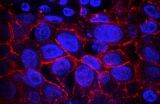(Press-News.org) DURHAM, N.H. – Four decades of active research and debate by the solar physics community have failed to bring consensus on what drives the sun's powerful coronal mass ejections (CMEs) that can have profound "space weather" effects on Earth-based power grids and satellites in near-Earth geospace.
In a paper just published in Nature Physics, an international team of space scientists, including a researcher from the University of New Hampshire's Space Science Center (SSC), explains the mysterious physical mechanisms underlying the origin of CMEs. Their findings, based on state-of-the-art computer simulations, show the intricate connection between motions in the sun's interior and these eruptions and could lead to better forecasting of hazardous space weather conditions.
CMEs are clouds of magnetic fields and plasma – a hot gas composed of charged particles. The fastest and most powerful of these events can explode from the sun at speeds of more than a million miles per hour and release more energy than the current worldwide stockpile of nuclear weapons.
"By studying CMEs we learn not only about the drivers of space weather but also about the structure of the atmosphere of the sun and other sun-like stars," says lead author Ilia Roussev of the Yunnan Astronomical Observatory, Chinese Academy of Sciences (CAS) and the Institute for Astronomy at the University of Hawaii at Manoa.
Geomagnetic storms caused by CMEs can disrupt power grids, satellites that operate global positioning systems and telecommunication networks, pose a threat to astronauts in outer space, lead to rerouting of flights over the polar regions, and cause spectacular auroras. The storms occur when a solar eruption hits Earth's protective magnetic bubble, or magnetosphere.
The Nature Physics paper, titled "Explaining fast ejections of plasma and exotic X-ray emission from the solar corona," provides an explanation of the origin of fast ejections of magnetized plasma from the sun's atmosphere and associated X-ray emissions. It thus demonstrates a fundamental connection between the magnetic processes inside the sun's interior and the formation of CMEs.
"Through this type of computer modeling we are able to understand how invisible bundles of magnetic field rise from under the surface of the sun into interplanetary space and propagate towards Earth with potentially damaging results", says SSC researcher Noé Lugaz of the UNH Institute for the Study of Earth, Oceans, and Space. He adds, "These fundamental phenomena cannot be observed even with the most advanced instruments on board NASA satellites but they can be revealed by numerical simulations."
A long-standing goal of the solar physics community has been the forecasting of solar eruptions and predictions of their impact on the Earth. In the paper, the authors note, "the model described here enables us not only to capture the magnetic evolution of the CME, but also to calculate the increased X-ray flux directly, which is a significant advantage over the existing models."
###The work was supported by a CAS grant and two National Science Foundation grants in the U.S. – one at the University of Hawaii and another at UNH. In addition to Roussev and Lugaz, the international team includes Klaus Galsgaard from the Niels Bohr Institute in Denmark, Cooper Downs from Predictive Science, Inc. in California, Igor Sokolov from the University of Michigan, Jun Lin from the Yunnan Astronomical Observatory, and Elena Moise from the Institute of Geodynamics of the Romanian Academy of Science.
The Nature Physics paper can be viewed at
http://www.nature.com/nphys/journal/vaop/ncurrent/pdf/nphys2427.pdf
The University of New Hampshire, founded in 1866, is a world-class public research university with the feel of a New England liberal arts college. A land, sea, and space-grant university, UNH is the state's flagship public institution, enrolling 12,200 undergraduate and 2,300 graduate students.
Photograph to download: http://www.eos.unh.edu/newsimage/SunModel_lg.jpg
Caption: A computer visualization of the sun (red sphere) and its magnetic field lines (orange and aquamarine). The close-up shows the final stage of the emergence of magnetic fields from under the solar surface and the associated X-ray emissions. This sophisticated computer model is used to investigate the drivers of harmful space weather phenomena, including coronal mass ejections. Image courtesy of Cooper Downs, Predictive Science, Inc.
Editors and reporters: Ilia Roussev can be reached at iroussev@ifa.hawaii.edu or 808-388-6462, Noé Lugaz at nlugaz@guero.sr.unh.edu or 603-862-5045, and Klaus Galsgaard at kg@nbi.ku.dk or +45 2293 7912.
Scientists shed light on riddle of sun's explosive events
2012-09-24
ELSE PRESS RELEASES FROM THIS DATE:
When they do not all look alike: Using identity to reduce own-race bias
2012-09-24
September 24, 2012 - People often remark that people of a different race "all look alike." However, when we have trouble recognizing people from another race, it may actually have little to do with the other person's race. Instead, new research finds that that we can improve our memory of members of another race by identifying ourselves as part of the same group. Such identification could improve everything from race relations to eyewitness identification.
"One of the most robust phenomena in social perception is the finding that people are better at remembering people ...
Little evidence supports medical treatment options for adolescents with autism
2012-09-24
Vanderbilt University researchers are reporting today that there is insufficient evidence to support the use of medical interventions in adolescents and young adults with autism.
Despite studies that show that many adolescents and young adults with autism spectrum disorders are being prescribed medications, there is almost no evidence to show whether these medications are helpful in this population, the researchers said.
These findings are featured in the Sept. 24 issue of Pediatrics.
"We need more research to be able to understand how to treat core symptoms of autism ...
Media coverage influences value of presidential debates for viewers, study finds
2012-09-24
COLUMBUS, Ohio -- The presidential debates offer viewers a lot of substance about the issues of the campaign -- but postdebate media coverage can undermine the value they have for voters, a new study suggests.
Results showed that postdebate coverage that focused on the debate as a competition led viewers to think less about policy issues. By comparison, coverage that focused on the substance of the discussion increased the likelihood that viewers would come away with specific thoughts about candidates' policy proposals.
The researchers conducted two different studies ...
Scientific discovery offers 'green' solution in fight against greenhouse gases
2012-09-24
A low-cost new material that could lead to innovative technologies to tackle global warming has been discovered by scientists at The University of Nottingham.
The porous material, named NOTT-300, has the potential to reduce fossil fuel emissions through the cheaper and more efficient capture of polluting gases such as carbon dioxide (CO2) and sulphur dioxide (SO2). The research, published in the scientific journal Nature Chemistry, demonstrates how the exciting properties of NOTT-300 could provide a greener alternative to existing solutions to adsorb CO2 which are expensive ...
AIDS patients face risk for esophageal, stomach cancers
2012-09-24
People with AIDS are at increased risk for developing esophageal and stomach carcinoma as well as non-Hodgkin lymphomas (NHLs), according to a new study in Gastroenterology, the official journal of the American Gastroenterological Association.
"People diagnosed with AIDS are living longer due to improved therapies. However, they remain at increased risk of developing a number of different cancers," said E. Christina Persson, PhD, of the National Cancer Institute and lead author of this study. "An elevated risk of esophageal and stomach cancers had been observed before, ...
Managing soil copper in crops irrigated with cattle footbath wastewater
2012-09-24
This press release is available in Spanish.
Getting a head start on stopping soil copper buildup will now be a bit easier, thanks to studies by U.S. Department of Agriculture (USDA) scientists. This research could help Pacific Northwest farmers develop long-term irrigation management strategies to protect crops from potentially dangerous soil copper levels.
Scientists with USDA's Agricultural Research Service (ARS) conducted a laboratory investigation to assess how copper levels in wastewater used for irrigation affected crop performance and soil microbial activities. ...
UNC Lineberger scientists lead cancer genome analysis of breast cancer
2012-09-24
A team of scientists with The Cancer Genome Atlas program reports their genetic characterization of 800 breast tumors, including finding some of the genetic causes of the most common forms of breast cancer, providing clues for new therapeutic targets, and identifying a molecular similarity between one sub-type of breast cancer and ovarian cancer.
Their findings, which offer a more comprehensive understanding of the mechanisms behind each sub-type of breast cancer, are reported in the September 23, 2012 online edition of the journal Nature.
The researchers, including ...
Stratosphere targets deep sea to shape climate
2012-09-24
SALT LAKE CITY, Sept. 23, 2012 – A University of Utah study suggests something amazing: Periodic changes in winds 15 to 30 miles high in the stratosphere influence the seas by striking a vulnerable "Achilles heel" in the North Atlantic and changing mile-deep ocean circulation patterns, which in turn affect Earth's climate.
"We found evidence that what happens in the stratosphere matters for the ocean circulation and therefore for climate," says Thomas Reichler, senior author of the study published online Sunday, Sept. 23 in the journal Nature Geoscience.
Scientists ...
Constraining world trade is unlikely to help the climate
2012-09-24
Instead, researchers were able to pin down a number of factors explaining the pronounced imbalances between emission importers and exporters, the US current account deficit being one of them. Their conclusion: interventions in world trade, like CO2 tariffs, would probably have only a small impact on global emissions.
Steadily growing world trade leads – as earlier research has shown – to a substantial transfer of CO2 from one country to another. The traded goods effectively contain the greenhouse gas, as it originates from the energy used during their production. "Typically, ...
Study reveals genomic similarities between breast cancer and ovarian cancers
2012-09-24
One subtype of breast cancer shares many genetic features with high-grade serous ovarian cancer, a cancer that is very difficult to treat, according to researchers supported by the National Institutes of Health. The findings suggest that the two cancers are of similar molecular origin, which may facilitate the comparison of therapeutic data for subtypes of breast and ovarian cancers.
The researchers, using data generated as part of The Cancer Genome Atlas (TCGA), described new insights into the four standard molecular subtypes based on a comprehensive characterization ...

